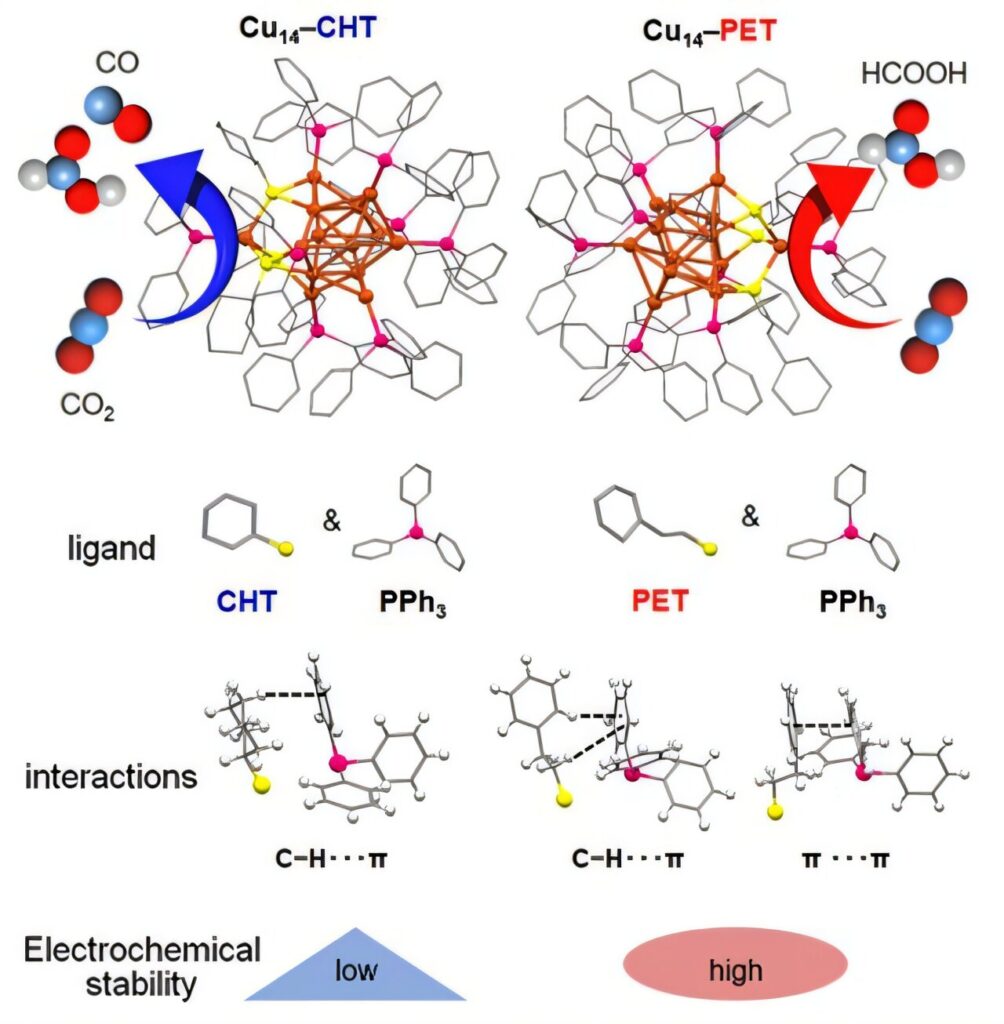While humble copper (Cu) may not boast the allure of gold or silver, its remarkable versatility makes it invaluable in cutting-edge research. A collaborative effort by scientists from Tohoku University, the Tokyo University of Science, and the University of Adelaide has unveiled a method to enhance the selectivity and sustainability of electrochemical CO2 reduction processes.
By engineering the surfaces of Cu nanoclusters (NCs) at the atomic level, the team has unlocked new possibilities for efficient and eco-friendly carbon conversion technologies. This breakthrough not only showcases the transformative potential of Cu in sustainable chemistry, but also highlights the critical impact of global collaboration in addressing pressing challenges like carbon emissions.
The results were published in the journal Small on December 4, 2024.
Electrochemical CO2 reduction reactions (CO2RR) have garnered significant attention in recent years for their potential to transform excess atmospheric CO2 into valuable products. Among the various nanocatalysts studied, NCs have emerged as a standout due to their distinct advantages over larger nanoparticles.
Within this family, Cu NCs have shown great promise, offering formation of variable products, high catalytic activity, and sustainability. Despite these advantages, achieving precise control over product selectivity at an industrial scale remains a challenge. As a result, current research is intensely focused on refining these properties to unlock the full potential of Cu NCs for sustainable CO2 conversion.
“To achieve this breakthrough, our team had to modify NCs at the atomic scale,” explains Professor Yuichi Negishi of Tohoku University, “However, it’s very challenging since the geometry of the NCs was heavily dependent on the precise parts that we needed to alter. It was like trying to move a supporting pillar of a building.”

They successfully synthesized two Cu14 NCs with identical structural architectures by altering the thiolate ligands (PET: 2-phenylethanethiolate; CHT: cyclohexanethiolate) on their surfaces. Overcoming this limitation required the development of a carefully controlled reduction strategy, which enabled the creation of two structurally identical NCs with distinct ligands—a significant step forward in NC design.
However, the team observed variations in the stability of these NCs, attributed to differences in intercluster interactions. These disparities play a crucial role in shaping the sustainability of these NCs during catalytic applications.
Although these NCs share nearly identical geometries derived from two different thiolate ligands, they demonstrate markedly different product selectivity when their catalytic activity for CO2 reduction was tested. These variations impact the overall efficiency and selectivity of the CO2RR.
Negishi concludes, “These findings are pivotal for advancing the design of Cu NCs that combine stability with high selectivity, paving the way for more efficient and reliable electrochemical CO2 reduction technologies.”


